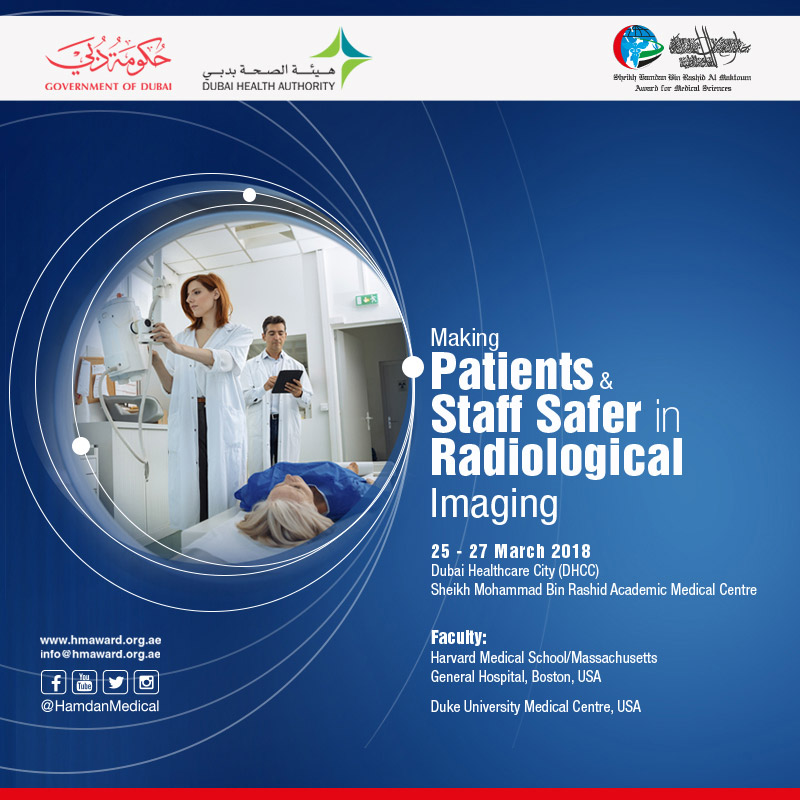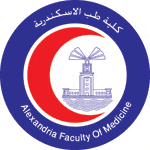Faculty of Medicine - Alexandria University, Egypt
Arab World Awards
Hamdan Award for the Best Medical College/Institute or Centre in the Arab World
2009-2010
History and Services
In 1938, the nucleus of the Alexandria University had its beginning in the form of two satellite faculties of Fouad the First University. These were the faculties of Arts and Law. The faculty of Engineering was established in 1941. In order to keep up with the pace of educational development and develop more disciplines for higher learning as the steps towards meeting the needs of the people of Alexandria, Alexandria University, formerly known as Farouk University, became a separate entity in August 1942 with four additional faculties: Science, Commerce, Medicine and Agriculture.
The Faculty of Medicine was established by a royal decree in August 1942 by King Farouk The First. The teaching started in the academic year of 1942-1943. In addition to the medical school itself, the Faculty of Medicine expanded to encompass a Dentistry School (I945), a Pharmacy School (1948), a School for Nurses, Midwives and Physiotherapists (1950) and the Higher Institute of Nursing in collaboration with the World Health Organization (1956).
It was known as Farouk University until the Egyptian Revolution of 1952 when its name was changed to the University of Alexandria. It is now the second largest university in Egypt.
The establishment of the faculty was the culmination of the efforts of many Alexandrian scholars and physicians. The pre-clinical teaching took place on the premises of the Abbaseya Secondary School, while the clinical teaching took place in the Municipal (Amireya) Hospital, the largest hospital in Alexandria built by Khedive Ismail in 1876. A new hospital was subsequently established to house all the clinical departments of the Faculty. Four new buildings were also added with four large amphitheatres to house the academic departments.
Since then, the university witnessed growth and expansion in several fields and the number of faculties and higher institutes increased to 30. In 1989, four faculties and Institute affiliated to Helwan University and located in Alexandria joined the University by a Presidential Decree. The faculties were Physical Education for men, Physical Education for women, Fine Arts and Agriculture.
The establishment of the Faculty of Medicine is considered by many as the ‘reopening’ of the medical school that existed in the old Alexandria University around 350 BC. Famous graduates from the ‘old’ Faculty of Medicine include Galen, Ptolemy, Archimedes and Erastothenes.
The modern day Faculty of Medicine serves over 7000 undergraduate students and more 2000 post-graduate students. The University Hospitals, affiliated to the Faculty of Medicine, are the main providers of health care for the poor and middle-class population of Alexandria Governorate and nearby Governorates with a population of approximately eight million.
Facilities and Initiatives
The Faculty of Medicine offers many services to the community, besides its main function of teaching the undergraduate and postgraduate medical students, treating patients and conducting medical research. All the clinics and hospitals are open to the public free of charge. Other services to the community include “Medical Convoys” involving members of the staff from various medical and surgical disciplines dispatched to the remote areas of Alexandria, Egypt and Africa to treat poor patients in their communities.
The introduction of quality control and changes to medical policies has driven the Faculty of Medicine to form satellite medical branches outside Egypt. The Alexandria Virtual Medical School (A VMS) and French Teaching Program allows the medical education to spread from Alexandria to Africa and the Middle East. Believing in its role and responsibilities towards the Arab and African countries, Alexandria University, in 1960, established the Beirut Arab University in Beirut which is run and supervised by the educational and administrative cadres from the Alexandria University.
The Alexandria University is working on the establishment of a branch in Juba, south of Sudan, and in N’djamena in Chad.
Research activities are funded through the University budget, grants from industry and international agencies and through agreements with donating agencies. Research projects and activities are implemented either on the University premises, in communities within Alexandria Governorate or in semi-urban and rural areas in the nearby governorates.
Awards and Recognition
In the year 2007/2008, 3186 Diploma degrees, 825 Master degrees, 372 Doctorate degrees were granted. In 2008/2009, 6437 Diploma degrees, 894 Master degrees, 309 Doctorate degrees were granted.
In 2007, the institution received two awards in the health field- The Encouragement State Award in the field of Medical Science and The Prof. Dr. Mahmoud Zein Award in the field of Veterinary Medicine Science.
In 2008, the university received the Encouragement State Award in the field of Basic Sciences (one award), The Encouragement University Award (27 awards), The Merit University Award (13 awards), The University Award for Scientific Excellence (2 awards), and Dr. Taha Hussein Award (2 awards).
Alexandria University is the Co-Chair of the EPUF, a member of the Management Board and the Senate of the Euro Mediterranean University in Slovenia, the Chair of Office of the Euro Mediterranean University Presidents in the Middle East, and a member of the Union of Arab Universities, Union of African Universities, and Union of Francophone Universities.
In a region where there is growing competition from emerging private medical schools to meet the demand for medical training, there are constraints of space, staff and patient numbers for clinical training.
The ongoing expansion will address this limitation and the new hospital built will meet the healthcare needs of the local people. Recent provision for an international student mix will facilitate the acceptance of proposed problem-based learning (PBL) more widely. Undergraduate as well postgraduate curriculums are running satisfactory and the provision for continued professional development is an excellent step forward.
Research is driven by local priorities and reflects the local need although the available fund is limited. Staff members are encouraged to participate in Cochrane review and students drive up standards by providing a framework for evaluation.
The University is working to establish centers of excellence in various medical domains. It presently has specialized research centers such as Centre of Nanotechnology, Centre for Marrow Transplantation, Centre for Stem Cell Research and Centre of Clinical Research, in addition to specialized medical centers such as the Centre of Liver Transplant Centre & Kidney Transplant, and specialized Centre of Brain and Nerves.
Alexandria Faculty of Medicine (AFM) has produced superb physicians who have served the health industry throughout the world, especially the Middle East. Its state-of-the-art centers of excellence are reflected through the establishment of new departments and sub-specialties such as emergency medicine, critical care, cardiology, nephrology, and eye and ear surgery.
These facilities have attracted thousands of doctors from the Middle East and Africa to get themselves trained at the AFM. Over the years, millions of patients from this region have also come to seek health advice and consultations in Alexandria.
The Alexandria Virtual Medical School (AVMS), the international program and French Teaching Program, will allow the medical education to spread from Alexandria to Africa and the Middle East.
While AFM continues to upgrade its buildings and infrastructure on its current campus, the new Alexandria Healthcare and Research City is presently under construction, about 40 kilometers west of Alexandria. This new campus will provide cutting-edge facilities to meet the challenges of the 21st century, in healthcare, research and medical education.
AFM at a glance
Human Resources
1700 Staff Members
500 Residents
71 Tutors
200 Pharmacists
1251 Nursing Staff Members
2650 Nurses
3201 Technicians
7583 Paramedical Employees
Medical Education and Research
8900 undergraduate students through the 6 years in three educational programs (The regular program, the international program and the French program with credit point transfer system)
4500 registered for postgraduate studies in the year 2010 with credit hour system
Over 300 Scholarships to foreign countries
Over 300 postdoctoral fellowships
Over 100 International Scientific Agreements Learning Facilities:
33 Departments
30 Lecture Halls and amphitheatres
60 small Class Rooms
14 Laboratories (for research + health services) Museums (Anatomy, Pathology, Forensic medicine and parasitology)
4 Dissection Halls
Two Libraries
12 computer Labs with 800 computers
Digital Library
An Information Technology Centre
First Virtual Medical School in the Middle East
Teleconference Facilities
An audiovisual department
A fully equipped medical convention centre
Health Care
8 University hospitals, 5 centers of excellence
4,490 beds
250,000 admissions
100,000 surgical procedures
1,200,000 outpatient visits
Centers of Excellence:
Kidney Transplant Center
Liver Transplantation
Heart Catheterization and open heart Center
Bone Marrow Transplant Center
Cochlear Implantation Unit
Assisted Reproduction Unit
Clinical Pharmacy Center
Rashid Tumor Therapy Center
Bilharzias is Center
Pediatric Urology Center
Pediatric Ophthalmology Center
ORL Head & Neck Surgery Center
WHO Collaborative Research Centre in Human Reproduction
Clinical Genetics Centre
Nanotechnology Centre
Stem Cell Lab
The Faculty of Medicine Alexandria University, given its outstanding contributions towards the quality higher education with innovative curriculum and approach, internationally competitive research and provision of excellent clinical services to the Arab world, deserves to be presented the Hamdan Award for Medical College/Institute in the Arab World for the 2009-2010 term.

